How to choose a tennis racket for your skill level
In this blog, we will try to answer the following questions:
What is the right racket weight for you? For Beginner, for Intermediate, for Advanced
What head size should you get?
Which balance is best for your tennis racket?
There are a number of characteristics of the tennis racquet that are very specific and hard to wrap your head around, such as its swing weight, beam width, string pattern, grip size and stiffness.
We will give you the best advice we can without going into too much technical stuff which will be covered in the next blog for our most curious customers.
To simplify the selection process, we have organized our recommendations by skill level taking three essential factors into account: head size, weight, and balance.
In this blog, we will talk about adult racquets with the most common length of 27 inches (68.6 cm), although some players may prefer the one with 28-29 inch length.
If you are looking for a junior racket, please see our selection here.
Let's get started and remember that regardless of whether you are experienced, or just starting out, choosing the right tennis racquet will help you play your best and that's what matters!
Beginner to Intermediate - Light & Powerful
Recommended weight for beginner to intermediate
According to various sources, the ideal racquet weight should be between 9 and 10 ounces (260g - 285g).
If you are a beginner, then you should look for a lighter racket, this will help you develop a proper swing and a follow-through.
A good lightweight tennis racquet is about 275 grams. Once you have mastered the basics of the sport, you can start to look for a slightly heavier racquet.
The reason is that a lighter racquet is easier to move and switch between forehand and backhand. Furthermore, these rackets can generate more power for those players who still need to improve their swing technique or who just want more maneuverability.
Top lightweight tennis racquets
Recommended balance for a beginner racket
A tennis racquet can either be Head Light (HL), Head Heavy (HH) or Evenly Balanced (EB).
The balance will directly affect how much power you can put into your swing.
We have already chosen a light weight for greater maneuverability, so a head-heavy balance is needed to add power and stability.
The balance point is determined by the distribution of mass in the racket. Rackets that are considered to be head-heavy have more mass in the head.
In this category, you will usually find racquets with a balance between 33 cm and 34.3 cm (0 - 4 pts HL).
Recommended head size for beginner to intermediate
As the size of the head is directly proportional to the speed of the ball on impact with the strings, you need to know what is best for your game. Basically, the larger the head, the bigger the sweet spot, and the faster the ball will spring off the strings.
Racket head size refers to the total surface area of the head and is usually expressed in square inches.
For reference, there are 3 commonly used tennis racket head sizes: Mid (85-97 square inches), Midplus (MP) (98-104 square inches) and Oversized (OS) (105 -115 square inches).
If you are working up to the intermediate level, 102-105 square inches will likely be the best size. Players seeking more power are advised to go for an oversize racquet of 105-115 square inches with an open string pattern, but this may come at the sacrifice of control.
The larger sweet spot makes off-center shots less problematic, allowing for more consistent power shots.
To conclude, a power racquet with the following specs should prove more enjoyable to learn with: a larger head size of 102-105 SQ IN, a more head-heavy balance of around 34.0 cm (1 pts. HL) and approximately 285 grams (~10 oz) that is neither too light nor too large to put you at a disadvantage as you develop your technique.
Intermediate to Advanced - Optimum power & control
Even though not recommended, a beginner can probably get away with a cheap tennis racquet made of lower-quality materials. However, as you get better, you should consider upgrading to a premium quality graphite racket (carbon fiber composite).
Recommended weight for an intermediate tennis player
Most players with at least a few years of experience opt for a heavier racket in the mid-weight category, which is between 285 and 305 grams.
Additional weight will provide you with greater control and stability, which is why experienced players prefer heavier racquets.
Furthermore, there's an interesting fact: many of our customers wonder if a heavier racket will cause tennis elbow.
Actually, a heavier racquet tends to be better in that regard because they absorb vibrations better than the lighter ones.
You still need to use common sense though. At this level, if your racket is too heavy, it will be difficult to swing and may tire your arm and shoulder muscles.
Recommended balance for an intermediate player
The right balance can help you hit killer backhands and powerful serves, while the wrong balance will make your shots weak and erratic. But what exactly is the "right" balance for an intermediate player?
As we discussed before, a head-heavy racket produces more power, which is great when you are just starting out. As you move forward, however, racquets with a more head-light balance are easier to manoeuvre and provide better control.
It's time to get a little more specific about how the balance of a tennis racquet is measured. Usually, the balance is quoted in centimetres or points.
The standard racquet length is 27'' (68.6 cm) so the halfway balance point is 13.5'' (34.3 cm).
That being said, most modern racquets have a balance below 34.3 cm, making them "head light" by definition.
However, you still need to know how "head light" your tennis racquet should be.
The racquets that are very head-light (e.g. 31.5 cm) will balance closer to the handle.
Such racquets offer a lot of control, though not much power and are best for advanced players only otherwise your swing could suffer.
We consider the ideal balance for an intermediate level tennis racquet between 32.5 and 33.0 cm.
You will also notice the balance given in points, such as 4 pts. HL.
1 pt = 1/8 inch measured from the middle of the tennis racquet.
In other words, if it says 4 points head-light (4 pts. HL), you need to measure 1/2" from the middle of the racquet towards the but cap and this is the point where it will balance.
Recommended head size for an intermediate level
Most of these racquets are between 98 and 102 square inches (632 cm2 - 658 cm2), which may also be referred to as Midplus.
It's worth noting that Midplus racquets can have up to 104 SQ IN, but we wouldn't recommend anything over 102 SQ IN for intermediate level players.
As your technique improves, you should be able to generate power with your own swing versus the beginner's racquet where most power comes from the hitting area.
Therefore, you should move away from a big head in order to attain greater accuracy. At this stage you should rely more on control, hence a smaller head is probably the better option.
To summarize, for an intermediate level player, we'd recommend a slightly head-light balanced racquet (32.5 cm or 6 pts HL) with 100 square inch (645 cm²) head and around 300 grams (10.6 oz.).
Racquets with these specifications will allow you to reap the benefits of your improved technique by using topspin when needed and hitting the tennis ball more accurately down the line.
Advanced - Maximum control
At this skill level, you've played enough to know what specs work for you.
In most cases, it's just a matter of trying out a few high-end racquets, so we'll just summarize a few things you can consider when shopping for a control racket.
Recommended weight for an advanced player
Now that you have already mastered your swing and footwork, you no longer require a forgiving racquet in order to get the tennis ball over the net from the baseline.
Now you'll need a weapon to capitalize on all those years of experience.
In this category, you would only consider racquets that weigh 305 grams and up to counterattack powerful shots from your opponent.
Some advanced players may favour a tennis racket as heavy as 330-340g and might even customize it with lead or tungsten tape but the majority would still prefer the one that weighs 305 g to 320 g.
Just keep it in mind when choosing a very heavy racquet since it can't be reversed, however, adding some weight is always an option.
Recommended balance for an advanced player
It's obviously a matter of personal preference, but most players say a Head Light balance blends better with a heavy frame.
With a few exceptions, you won't see many pro players using heavy racquets with a Head Heavy balance.
The reason is simple: a heavy tennis racket over 310 g already gives you structural stability and an excellent shock-absorption. And, at this stage of your game, you don't need extra power that comes from a Head Heavy balance. What you want instead is control. A Head Light balance compliments a heavy frame so long as you have mastered your fast and short swings.
In fact, the heavier the racquet, the more "Head Light" it needs to be in order to add maneuverability otherwise the swing-weight will be too high.
That is why advanced racquets usually have a balance between 315 mm and 325 mm.
Recommended racquet head size for an advanced player
Basically, a smaller head size means more control and less power, which is exactly what an advanced player wants.
The majority of advanced players will pick a head that is 97 or 95 SQ IN, although some would choose a more forgiving 98 square-inch frame.
This head size is called "Mid", and runs from 85 to 97 SQ IN, though these days you rarely see racquets smaller than 93 SQ IN.
It's also worth pointing out that smaller head also means smaller "sweet spot," which translates into a less forgiving racquet on off-center shots. No wonder it's reserved for advanced players only!
A stiffness should also be considered when choosing an advanced racquet.
We'll cover details in the next blog, but it's still important to note that a more flexible rating (RA 64 and below) is often preferred for heavy frames with Head Light balance, especially in the context of strings you're using.
The logic behind it is that advanced players often choose stiff polyester strings for durability, spin and other reasons.
Now try using stiff strings with a rigid frame and you get a very uncomfortable playing experience which can even lead to tennis elbow and other injuries.
In contrast, flexible frames are more comfortable, less powerful and give more control to advanced players who play at a higher pace using fast and short swings.
It's hard to define an ideal tennis racquet for an advanced player but in many cases, it would be a 95-97 SQ IN flexible frame with head light balance of 315 - 325 mm and the weight of around 320-330 g. A beam width below 22 mm and a closed (dense) string pattern is also recommended.
Unless you know the exact specs and brand you want, test-driving some racquets is a must.
However, that solution doesn't always solve all the problems, since many players don't have their preferred strings and tension when they demo a racquet and as a result, can't fully feel how it plays.
If you are looking to demo a few high-end racquets, please contact us, and we'll see if we can have it strung to your liking with the correct grip size and string tension.
*Disclaimer: the graphs below are based on the study of our Sports Virtuoso team, at no point are we claiming the accuracy of our calculations.
For our research, we took the following assumption without taking personal preferences of a particular player into account:
A more advanced racquet weighs more and has a smaller head size, more head light balance and narrower beam width.
To illustrate how specifications are related to the level of proficiency, we converted each spec into the Skill Level Score on the scale from 0 (complete beginner) to 100 (the most advanced).
We chose to use the following ranges to calculate the skill level score for a particular specification:
Net Weight: 255 (0) to 340 g (100)
Swing Weight: 290 (0) to 340 g (100)
Balance: 345 (0) to 305 mm (100)
Head Size: 115 (0) to 93 square inches (100)
For example, a racquet with a head size of 102 square inches will score (102-93)/22*100=41 out of 100 on the skill level scale.
In this formula, “102” is the head size of a particular racquet, “93” is the minimum number in the Head Size range and “22” is the difference of the minimum and maximum in the Head Size range (115 - 93 = 22).
The same principle is applied to the calculation of the Balance, Weight and Swing Weight Skill Level Scores.
With a higher score comes a higher skill set required to fully benefit from a specific racquet.
To sum it up, the Racquet Skill Level Score is a combined average of each specification's Skill Level Score.
Tennis Canada's self-rating guide can give you a quick idea of your skill level, which is usually between 1.0 and 5.0 for most players.
For your convenience, we have associated the Racquet Skill Level Score with the corresponding Tennis Canada Skill Level.
Once you know your Tennis Canada Skill Level, you can see which racquets fit into this category.
Talk to you soon,
Tim Burganov
Sports Virtuoso founder




Leave a comment